More Coverage
Twitter Coverage
Satyaagrah
Written on
Satyaagrah
Written on
Satyaagrah
Written on
Satyaagrah
Written on
Satyaagrah
Written on
JOIN SATYAAGRAH SOCIAL MEDIA
Busting the myth of “glories” of the Mughal Empire and its economic superiority as fantasized by Indian Marxist and Liberal historians

Indian Marxist and Liberal historians and intellectuals alike have long fantasised about the apparent “glories” of the Mughal Empire and how “prosperous” it was, economically speaking. This article is an attempt at refuting these utterly false claims, which are nothing but malicious jibes of Hinduphobia and endorsement of Islamophilia for their own sinister ideals.
It is sickening that these morons do not realise how brutally these Islamic hordes exploited, plundered and massacred the glorious civilisations of Bharatavarsha.
An Empire is defined by its inhabitants, its people. An Empire is practically nothing, if not for its populace, if not for its own people. The conditions of its people, is thus, an apt and reasonable description of the economy of any Empire — which cannot be judged solely by the lifestyles and incomes of the ruling aristocracy. If the civilians are economically devastated, the decline of an Empire is all but assured — which has been the trend throughout human history.
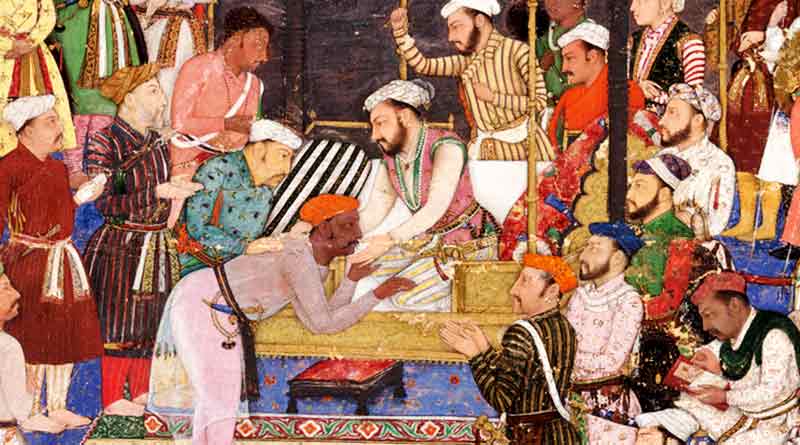 |
The Mughal Empire, despite being so “prosperous”, could not install water wheels in even 2% of their wells. Such was the level of maintenance they carried out — which was obviously due to a lack of funds, since the majority of the revenue went to the pockets of the Mughal emperors, Mughal armed forces and their mansabdaars — with little to nothing left for infrastructure development for civilian purposes.
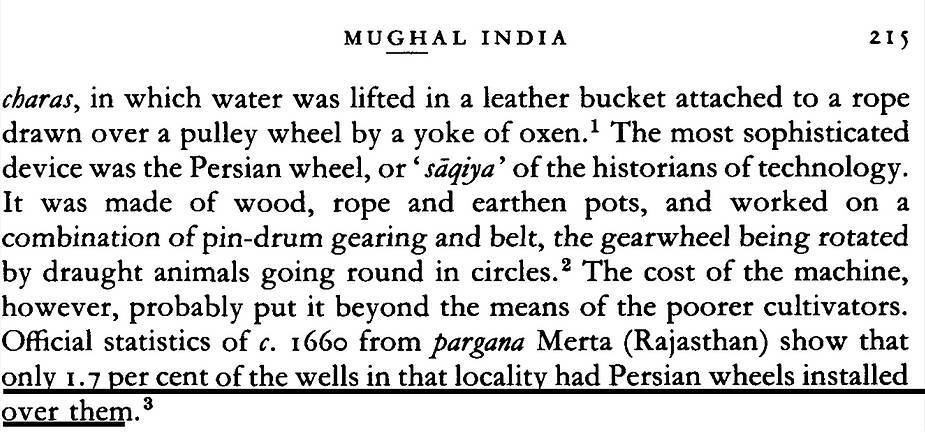 |
In stark contrast, the skilled architects of the Vijayanagara Empire under Shri Krishnadevaraya, were building 100 feet high and 800 feet wide dams — some of which were so durable that they are still functioning to date!
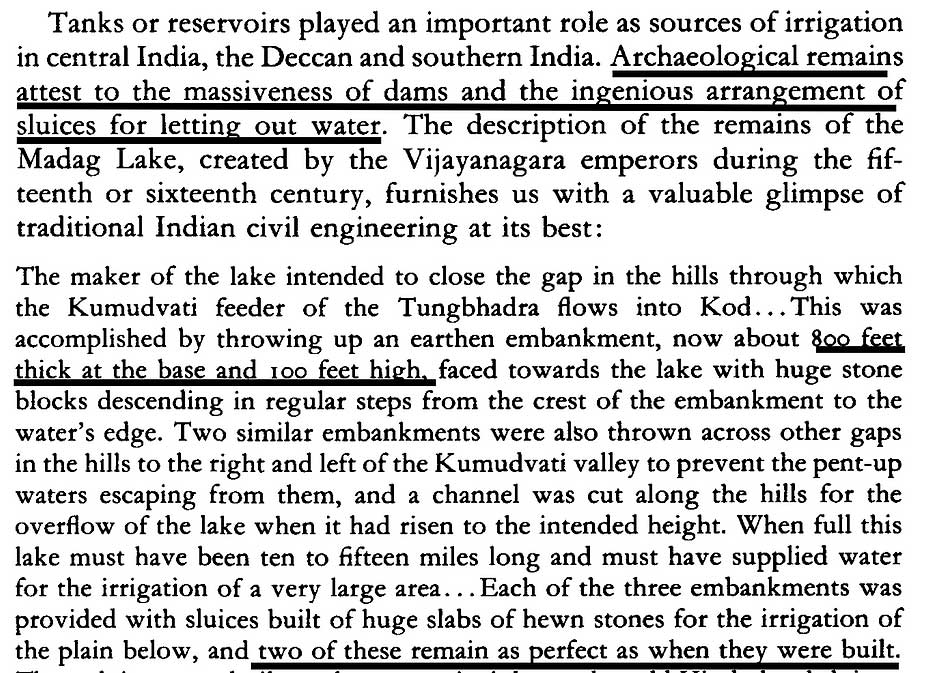 |
The entire foundation of the Mughal Economy was that of slavery — something intrinsic to Islamic religion itself. It has been a common trend in every Islamic Empire till date. Alauddin Khilji had as many as 50,000 slaves alone. Firuz Tughlaq had more than 180,000 slaves , out of which 12,000 were artisans and 40,000 were soldiers. Khan Jahan Maqbul, Tughlaq’s minister, had no less than 2,000 concubines. Slavery was so commonplace that even commoners and debt-ridden Muslims owned non-Muslim slaves. This was the reason why the Mughals had amassed so much wealth — it was all founded upon the ruthless extortion of Hindu slaves. That was the bedrock of their economy, without which they would have collapsed.
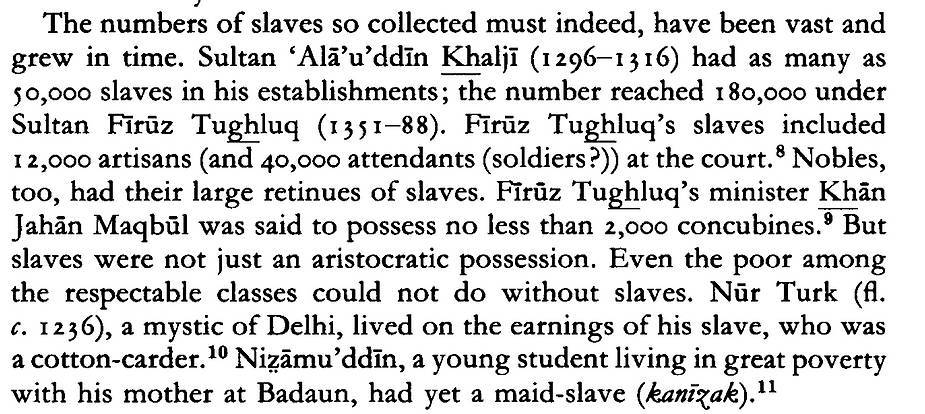 |
Another hurdle the Mughal economy constantly faced is the issue of mass-hoarding of goods, which leads to siphoning off of useful resources, thus having a negative impact on the overall economy. We can also get an idea on how the clear disparity between the rich and the poor was during the inherently exploitative Mughal regime by looking at some figures, the humongous wealth they left behind after their deaths:
 |
Imagine the astonishing wealth inequality in the apparently “glorious” Mughal economy. Massive amounts of wealth was taken for the extravagant luxuries of the Islamic overlords, while the peasants toiled hard to meet the heavy taxes levied on them, especially Hindus— who had to pay the additional jizya tax. Such a tyrannical regime is absolutely not “glorious”.
We can easily get an idea of how rich Bharatvarsha was before the devastating Islamic invasions by the given paragraph. Ibn Batuta vividly attests to the astronomical amounts of gold Muhammad bin Tughlaq extracted from Bharata. The gold from Bharat amounted to 122,000 mithqals, which is double the amount they were extracting from Egypt (64,000 mithqals) and almost 5 times as much as they were extracting from the West (24,000 mithqals). Imagine the sheer magnitude of Bharata’s prosperity!
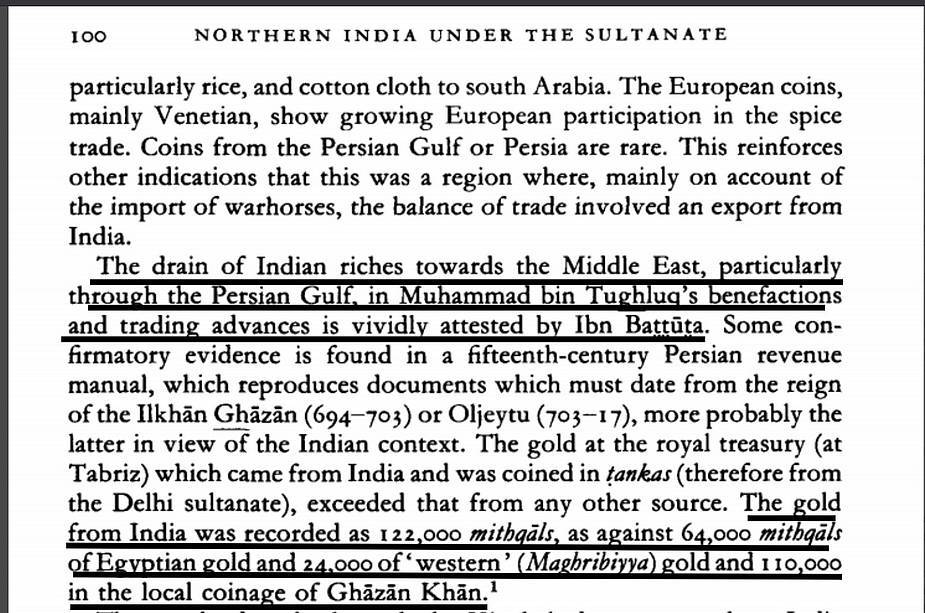 |
The lack of civilian infrastructure in an Empire as massive as the Mughal Empire is astonishing. It is truly ironic that despite agriculture being the biggest revenue-harvester for the Mughals, they failed to invest in the development of basic civilian infrastructure such as irrigation facilities, dams, etc. — maybe due to a lack of technological expertise OR due to lack of funds, since the majority of revenue collected went towards the maintenance of the army as well as for the profligate luxuries of the Mughal Emperor and for the opulence of his ministers and loyalists. The rulers of Mewar had built massive lakes and dams for agricultural purposes, allowing for a flourishing agricultural trade in the region, which was used by the Mughals, since they were more interested in their own selfish greeds:
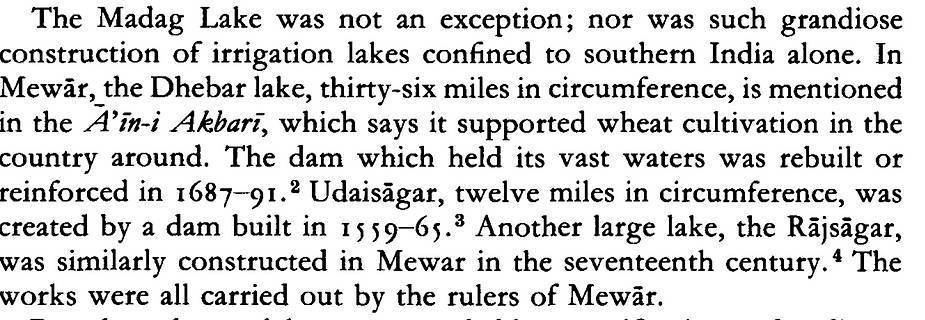 |
It is clearly evident how utterly exploitative the Mughals were, when they and their mansabdars kept a humongous 33%-50% of the entire GDP for themselves! No wonder they could not arrange for any civilian infrastructure like proper roads, sanitation facilities or irrigation systems, since the maintenance of a vast army will also require significant costs:
 |
No wonder every European traveller scoffed at the serious wealth inequality and income disparity between the ultra-rich and the acutely poor.
 |
This is so astonishingly different from what other foreign travellers used to comment on Bharat before Mughal rule. For instance, here is Faxian’s opinions on the state of the Bharatiya economy during Shri Vikramaditya’s rule:
 |
References:
 Support Us
Support Us
Satyagraha was born from the heart of our land, with an undying aim to unveil the true essence of Bharat. It seeks to illuminate the hidden tales of our valiant freedom fighters and the rich chronicles that haven't yet sung their complete melody in the mainstream.
While platforms like NDTV and 'The Wire' effortlessly garner funds under the banner of safeguarding democracy, we at Satyagraha walk a different path. Our strength and resonance come from you. In this journey to weave a stronger Bharat, every little contribution amplifies our voice. Let's come together, contribute as you can, and champion the true spirit of our nation.
 |  |  |
| ICICI Bank of Satyaagrah | Razorpay Bank of Satyaagrah | PayPal Bank of Satyaagrah - For International Payments |
If all above doesn't work, then try the LINK below:
Please share the article on other platforms
DISCLAIMER: The author is solely responsible for the views expressed in this article. The author carries the responsibility for citing and/or licensing of images utilized within the text. The website also frequently uses non-commercial images for representational purposes only in line with the article. We are not responsible for the authenticity of such images. If some images have a copyright issue, we request the person/entity to contact us at This email address is being protected from spambots. You need JavaScript enabled to view it. and we will take the necessary actions to resolve the issue.
Related Articles
- To be on the wrong side of history is a choice – How 21st-century invaders are capturing Chhatrapati Shivaji’s forts the way even Mughals didn’t and attempting to reclaim an invader identity unapologetically
- While Shaheen Bagh showcases its latest artwork for anti-CAA 'protest', it also reveals its true nature of Islamist supremacy and Hinduphobia: Adds image of Hindu Swastika being ‘smashed’ and disintegrating
- Embedded Hindumisia attitude of IndiaSpend is exposed further due to their faulty 'Hate Tracker' trying to show they are 'Neutral'
- ‘Casteless Hindu’ is Not a Paradox. It is The keystone of ‘Ghar Wapsi’ and Hindutva
- ‘Breast Tax’ to cover their breasts: A False Story to Attack Hindus based on a pseudo-historical legend
- Mohammedan needs to 'take back Babri Masjid', ISIS magazine states that Hindus are ‘filthy urine drinkers’ who learned civilized living from Muslims
- Islamic revivalist movements in Bharat and Deoband’s link to Taliban
- Prashant Bhushan and Lawyers write to CJI over Dharma Sansad speech while whitewashing hate crimes committed against Hindus
- ‘Liberal’ elites has issue with Hindu identity of PM Modi and emphasize "Aakhir Albert Pinto Ko Darr Kyun Lagta Hai" – Deciphering the latest rants of Naseeruddin Shah
- The true face of Saba Naqvi: How the ‘secular journalist’ supported Muslims acts of violence and fanaticism on Ram Sevaks in Sabarmati Express burning leading to gruesome killing of some 59 innocent people, including 25 women and 15 children
- Why authorities ignoring conspiracy of Sexual objectification of Hindu women: #Hslut4Mstud Users on Reddit, Twitter and Tumblr are targeting Hindu women with pornographic content ‘for Muslim studs’
- Propaganda to Vilifying Hindutva by media: Gurugram protesters seeking Kalicharan Maharaj’s release dubbed as ‘Anti-Namaz brigade’
- ‘Islamic Liberal’ journalist Fatima Bhutto, a British-Pakistani drags Hindus and Modi in her article in The Guardian on Pak blasphemy murder
- Devkinandan Thakur's statement is a slap in the face of the Islamist hoodlum from Hyderabad - “Many more Yogis and Modis standing in line…”
- 26 Dec 2021 to 1 Jan 2022 - Routine summary of persecution, hate-crimes and discrimination against Hindus: Hindus under attack




























